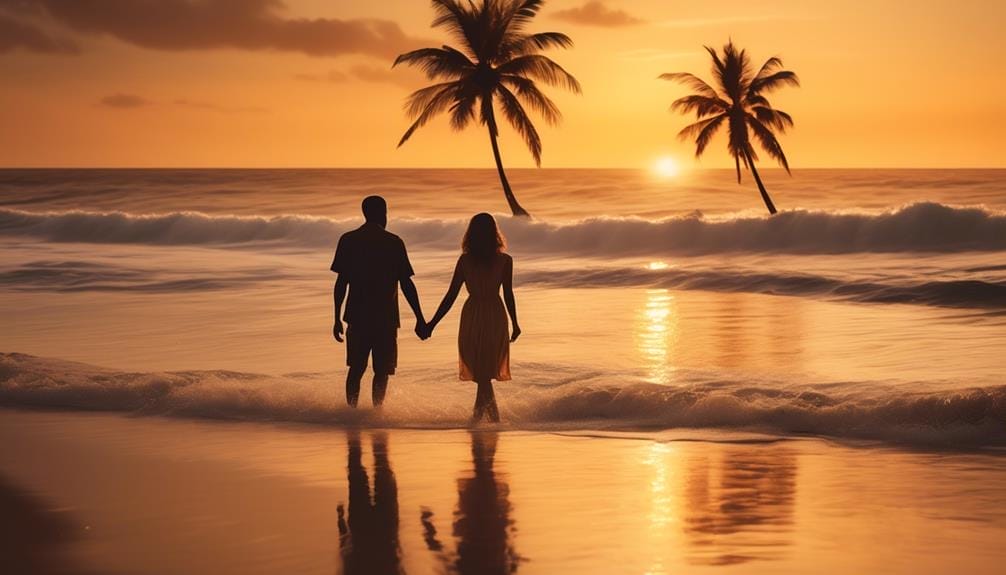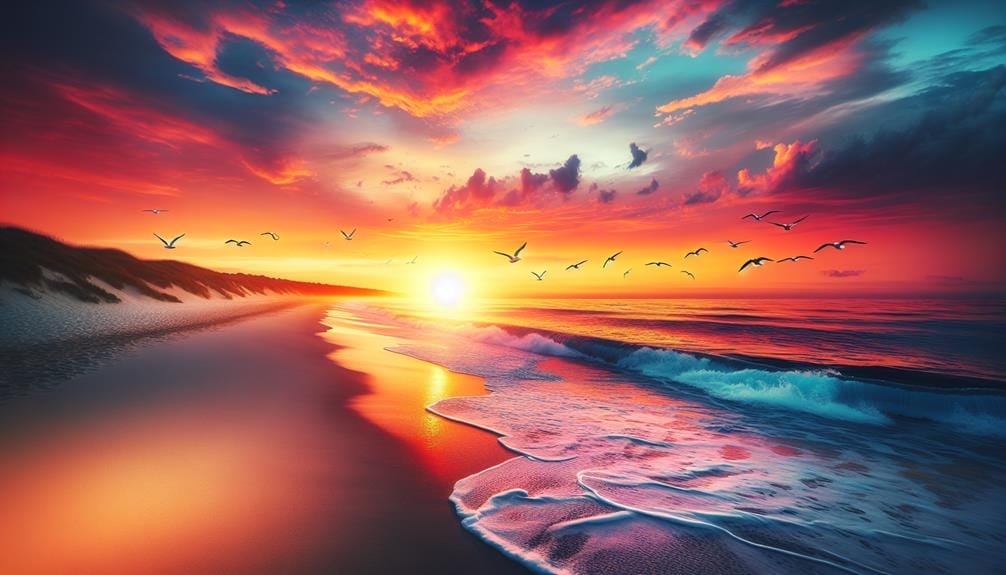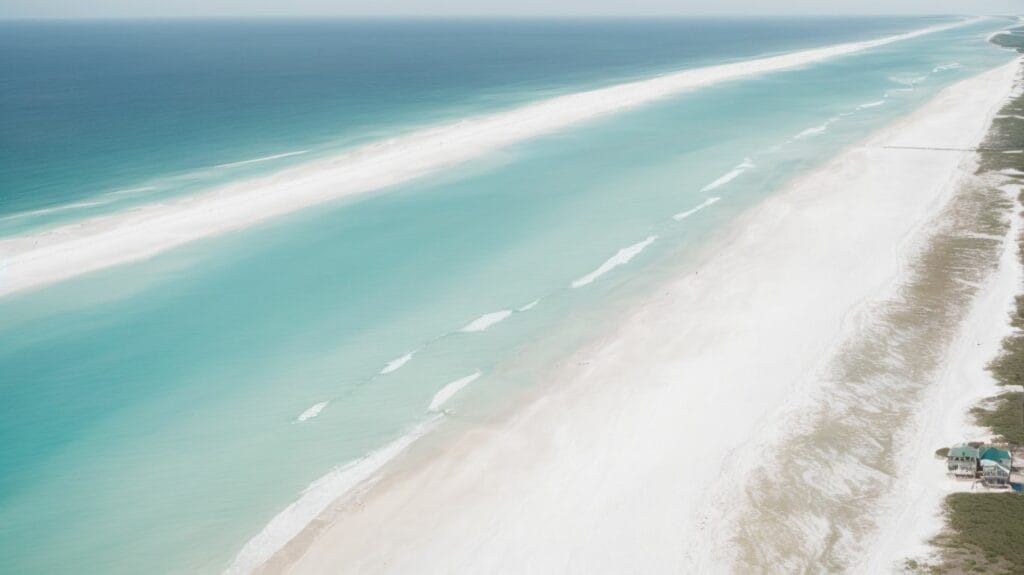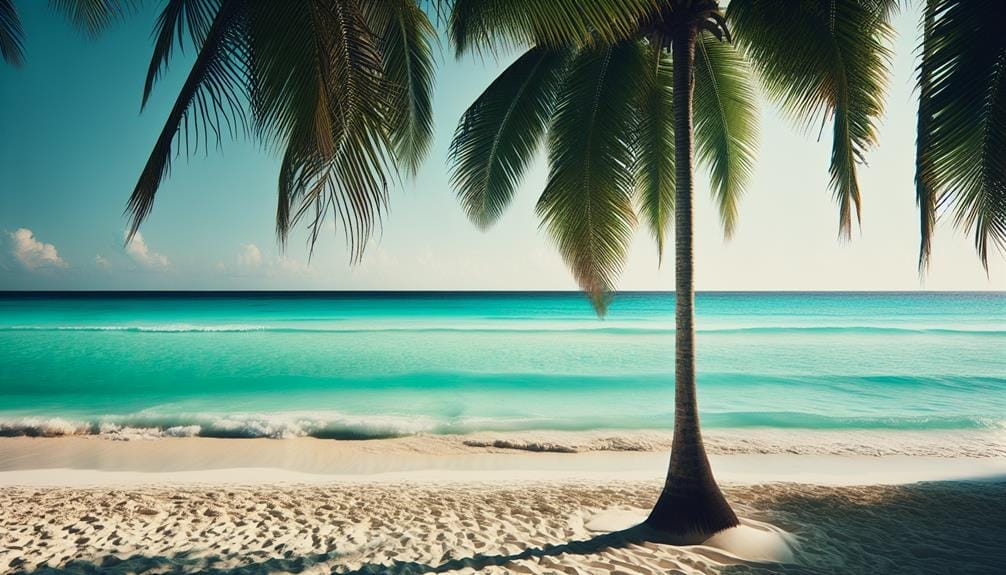Imagine being transported to a world where the golden sands meet the turquoise waters, where every wave carries a story, and every sunset paints a masterpiece. Welcome to the captivating realm of 30A Beach Photography, where the lens becomes your gateway to a world of breathtaking beauty and captivating moments.
But there's more to this enchanting journey than meets the eye. So, if you're ready to embark on an adventure that will unlock the secrets of capturing the essence of the beach, then get ready to discover the artistry and expertise behind 30A Beach Photography.
Key Takeaways
- Shooting during the golden hour provides softer and warmer lighting for beach photography.
- Using RAW format allows for easier post-processing and fixing exposure in beach photos.
- Experimenting with different angles, perspectives, and focal points adds interest to beach photography.
- Utilizing filters such as polarizing filters, neutral density filters, and color-enhancing filters can enhance colors, reduce glare, and create unique effects in beach photos.
Tips for Beach Photography
To capture stunning beach photographs, consider these essential tips.
The best time to shoot beach photos is during the golden hour, which is shortly after sunrise and before sunset. This time of day provides softer and redder lighting, making your photos more visually appealing. Additionally, photos taken during the golden hour are less likely to be overexposed. It's considered the most desirable time for nature photography, and you might even have the beach to yourself during this time.
Another tip for beach photography is to shoot in RAW format. RAW is an uncompressed image file format that allows for easier post-processing and helps fix over and underexposure in photographs. It preserves all the image data, giving you more flexibility in editing.
Lastly, when shooting at the beach, it's important to choose a focal point in your photos. A focal point draws the viewer's attention and adds context to the photograph. It can be something simple like a chair or a shell, but it makes the shot more interesting. Shots without a focal point may not make the best photograph.
Remember these tips to capture beautiful beach photos during the best times of the day.
Best Camera Settings
When it comes to beach photography, getting the best camera settings is crucial for capturing stunning images. You'll want to consider lighting techniques to make the most of the golden hour and create a desirable atmosphere, as well as composition tips to frame your shots effectively.
Additionally, capturing natural beach moments requires adjusting your camera settings to freeze motion or create fluid effects. By understanding and utilizing these camera settings, you'll be able to take your beach photography to the next level.
Lighting Techniques for Beaches
Adjust your camera settings to shoot in RAW format for better post-processing flexibility when capturing beach photography on 30A.
The lighting techniques you use can greatly enhance the quality of your beach photos. One effective technique is to take advantage of the golden hour, which occurs shortly after sunrise or before sunset. During this time, the lighting is softer and redder, creating a warm and inviting atmosphere in your images.
To ensure steady and sharp shots, especially for longer exposures and slower shutter speeds, consider using a tripod. Additionally, polarizing filters can be used to suppress glare and enhance the colors of your beach photos.
Experimenting with different shutter speeds will allow you to capture various motion effects, such as the fluidity of water and clouds.
Composition Tips for Beach Photography
For optimal composition in beach photography, consider adjusting your camera settings to capture the beauty of the shoreline and its surroundings. Here are three composition tips to help enhance your beach photos:
- Shoot in RAW format: By shooting in RAW, you preserve all the image data and allow for easier post-processing. This ensures that you have more flexibility in adjusting exposure, colors, and details later on.
- Choose a focal point: Selecting a focal point in your beach photography helps draw the viewer's attention and tells a story. Whether it's a unique rock formation, a person walking along the shore, or a stunning sunset, having a clear subject can make your photos more engaging.
- Utilize the golden hour: The golden hour, which occurs during the first and last hour of sunlight, provides softer and redder lighting. This time of day is highly desirable for beach photography as it can create a warm and dreamy atmosphere in your photos.
Capturing Natural Beach Moments
To capture natural beach moments, ensure you have the best camera settings that will enhance the beauty of the shoreline and its surroundings. Here are some recommended beach photography settings:
| Camera Setting | Recommendation |
|---|---|
| Shooting Mode | RAW |
| Focal Point | Choose a point of interest to draw attention and add interest to the photograph |
| Golden Hour | Utilize the softer and redder lighting during the Golden Hour for a more beautiful beach photography |
| Lens | Use a wide-angle lens to create a sense of depth and emphasize objects in the foreground |
| Shutter Speed | Adjust the shutter speed to capture various motion effects, such as the fluidity of water and clouds |
Using Filters for Beach Photography
Ready to take your beach photography to the next level?
Using filters can make a world of difference in enhancing your beach colors, reducing glare on water, and adding a touch of creativity to your shots.
Whether you're looking to deepen the blues, capture dreamy water effects, or balance the exposure between sky and sand, experimenting with different filter types will help you achieve stunning beach photographs.
Filter Types for Beaches
Enhance your beach photography with the use of different types of filters.
Here are three types of filters that can take your beach photos to the next level:
- Polarizing filters: These filters enhance the blues in the sky and water, making them more vibrant. They also darken shadows, suppress glare, and prevent overexposure during midday shoots at the beach. With a polarizing filter, you can capture stunning beach scenes with rich colors and reduced reflections.
- Neutral density filters: These filters reduce the amount of light that enters the camera, allowing you to use slower shutter speeds. This creates a dreamy, soft look to the water in beach photography, giving it a smooth and ethereal appearance.
- Graduated neutral density filters: These filters are ideal for capturing beach landscapes with varying light. They balance exposure between the bright sky and the darker sand, ensuring that both elements are properly exposed in your photos.
Enhancing Beach Colors
Improve the vibrancy and richness of your beach photos by utilizing filters to enhance the colors of the ocean and sky. Filters are a powerful tool in beach photography that can help you achieve stunning results. By using different types of filters, you can enhance specific colors and create a more captivating image. Here are some popular filters and their effects on beach colors:
| Filter Type | Effect on Beach Colors |
|---|---|
| Polarizing Filter | Deepens the blue tones in the sky and water, reduces glare and reflections |
| Graduated Neutral Density Filter | Balances the exposure between the bright sky and darker foreground, enhancing overall color and detail |
| Warming Filter | Adds warmth to the image, intensifying the golden tones during sunrise or sunset |
| Blue Color-Enhancing Filter | Enhances the blue hues of the ocean, making it appear more vibrant |
| Orange Color-Enhancing Filter | Heightens the warm tones of the sand, giving it a rich and inviting look |
Experimenting with different filters can greatly enhance the colors in your beach photography, creating captivating and eye-catching images.
Reducing Glare on Water
To reduce glare on the water in your beach photographs, consider using filters specifically designed for beach photography. These filters can help you capture stunning images by reducing reflections and enhancing the natural colors of the water.
Here are three ways filters can assist you in reducing glare and achieving the desired effects:
- Polarizing filters: These filters are great for beach photography as they reduce glare on water surfaces, allowing you to capture the true vibrancy of the scene.
- Neutral density filters: By using a neutral density filter, you can achieve longer exposures, resulting in smoother water textures and reduced glare.
- Graduated neutral density filters: These filters are particularly useful for balancing exposure between the bright sky and reflective water surfaces, minimizing glare and creating more balanced photographs.
Experiment with different filter strengths and angles to effectively reduce glare and capture the beauty of the water in your beach photography.
Shooting at Sunrise or Sunset
Capture the breathtaking colors and textures of the beach by shooting at sunrise or sunset, taking advantage of the golden hour for softer and warmer lighting. It's the best time to photograph the beach, as the soft light enhances the beauty of the landscape.
To make the most of this magical time, use a wide-angle lens to capture the expansive scenery and create a sense of depth in your photos. Experiment with different angles and perspectives to capture the unique colors and textures of the beach. Incorporate interesting foreground elements like shells, rocks, or structures to add visual interest and depth to your compositions.
To enhance the quality of your beach photos, consider using a neutral density filter to achieve dreamy, soft water effects. Once you've captured your images, you can further enhance them using photo editing apps. These apps allow you to adjust the exposure, contrast, and saturation levels, and even add filters to give your beach photos a more artistic touch.
Avoiding Crowds for Photoshoots

As you continue your beach photography journey, let's now dive into the subtopic of avoiding crowds for your photoshoots. Here are three strategies to help you find the best spots and avoid the hustle and bustle:
- Plan your photoshoot during off-peak hours: To capture the serene beauty of the beach without the crowds, consider scheduling your shoot during early morning or late afternoon. These times are typically less crowded, allowing you to focus on your photography and find the perfect angles without distractions.
- Explore less popular or remote beaches: Instead of heading to the most popular beaches, venture off the beaten path and discover hidden gems. These less frequented beaches often provide a more secluded backdrop for your photoshoots. Take the time to research and find these tranquil spots that offer unique perspectives and a sense of intimacy.
- Utilize weekdays for photoshoots: Weekends tend to attract larger crowds to the beach, so consider planning your shoot on weekdays. With fewer people around, you'll have more space to work with and fewer interruptions, allowing you to capture stunning images without the distractions of weekend beachgoers.
Getting Creative With Beach Photography
Enhance your beach photography skills by embracing creativity and exploring new techniques. To take photos that stand out, consider using a polarizing filter. This handy tool can enhance the blues of the sky and ocean, darken shadows, and prevent overexposure. It adds a dramatic flair to your beach photos, making them more captivating.
Another technique to experiment with is adjusting the white balance. By using the appropriate white balance setting, you can ensure that the colors in your photos appear accurate and natural.
Additionally, don't be afraid to get creative with your shutter speed. By varying the shutter speed, you can capture unique motion effects, such as the fluidity of water or the movement of clouds. This adds an element of interest and creativity to your beach photography.
Lastly, explore different angles and perspectives to create depth and visual impact. Incorporate leading lines and try shooting from high or low angles to add a unique touch to your compositions.
Mastering Beach Portraits

To master beach portraits and take stunning images that showcase your subjects, it's important to understand the key techniques and considerations specific to this genre of photography. Here are three essential tips to help you capture the best beach portraits:
- Make use of the golden hour: The golden hour, which occurs shortly after sunrise and before sunset, offers the most desirable lighting for beach photography. During this time, the light is softer and redder, creating a warm and flattering glow on your subjects. The softer lighting also helps to minimize harsh shadows and highlights, resulting in more balanced and pleasing images.
- Experiment with a slower shutter speed: By using a slower shutter speed, you can capture the movement of the ocean waves or create a dreamy effect with flowing water. This technique adds a sense of motion and dynamism to your beach portraits, making them more visually interesting and captivating.
- Consider using a tripod: When shooting beach portraits, it's important to keep your camera steady to ensure sharp and clear images. Using a tripod helps eliminate camera shake, especially when shooting in low light conditions or using longer shutter speeds. It allows you to focus on composing your shots and interacting with your subjects without worrying about blurry or shaky images.
Enhancing Your Beach Photography
Capture stunning beach photography by incorporating these techniques and tools to enhance your images.
To begin, shooting in RAW is essential for beach photography. This format preserves all the image data and allows for easier post-processing, making it ideal for fixing over and underexposure in your photographs.
Additionally, take advantage of the golden hour, which occurs shortly after sunrise and before sunset. During this time, the lighting is softer and redder, which is less likely to overexpose your beach photos. It also provides a desirable time for nature photography.
Another useful tool is a tripod. Not only does it ensure steady and sharp shots, but it also enables you to be in your own beach photos without relying on others. Furthermore, it creates smooth textures for moving water and clouds.
Enhance your beach photography with polarizing filters. These filters suppress glare from reflective surfaces, enhance blues, and darken shadows, adding a dramatic flair to your photos, especially during middle-of-the-day shoots.
Lastly, don't be afraid to experiment with different shutter speeds. Slowing down the shutter speed can capture the fluidity of water and clouds, while using a wide-angle lens can create a sense of depth in your landscape photography.
Frequently Asked Questions
How Do You Photograph the Beach?
To photograph the beach, capture stunning beach sunset captures, experiment with creative beach poses, and try to capture beach wildlife. Afterward, utilize editing techniques to enhance your beach photography.
How to Describe Beach Picture?
To describe a beach picture, focus on the vibrant colors of the sand and water, the serene atmosphere, and the joy on people's faces. Use descriptive words like "sunny," "relaxing," and "breathtaking" to convey the beauty of the scene.
What Are the Best Settings for Beach Photography?
To capture stunning beach photographs, use the golden hour for beautiful lighting. Choose the right lens for the desired composition. Experiment with shutter speeds to capture movement. Edit your images to enhance their beauty.
What Is the Best Color to Wear for a Beach Photoshoot?
For a beach photoshoot, opt for light, pastel colors like soft blues or pale pinks to convey serenity. Consider wearing white or neutral tones for a timeless look. Avoid heavy patterns or bright colors that distract from the beach's natural beauty.
Conclusion
Capture the breathtaking beauty of the beach with 30A Beach Photography.
With their expert tips and camera settings, you'll be able to create stunning images that showcase the natural serenity of the area.
Whether you're shooting at sunrise or sunset, avoiding crowds, or getting creative with your compositions, their experienced photographers will help you master the art of beach photography.
Don't miss out on enhancing your beach photography skills and creating lasting memories with 30A Beach Photography.





